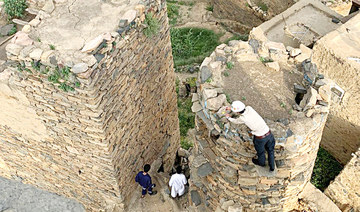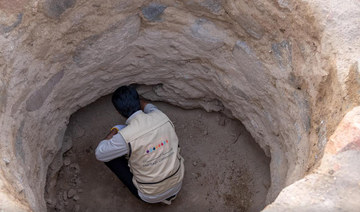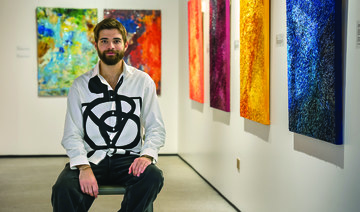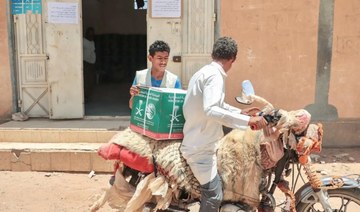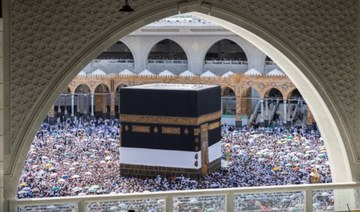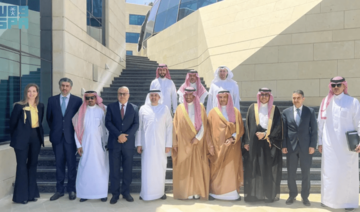RIYADH: Maj. Gen. Ahmed bin Saadi Al-Zahrani, general-director of the General Directorate for Drug Control, said the directorate, in cooperation with the National Drug Prevention Project (Nebras) distributed drug awareness pamphlets at the recently concluded King Abdulaziz Camel Festival to alert festival-goers of the dangers of drugs.
Awareness packs were distributed to the festival visitors and presents were given to children, who also enjoyed an art corner where they could draw images highlighting human values.
Al-Zahrani said the directorate will make sure it secures a presence at all occasions and activities, particularly those involving families, to spread awareness about the dangers of narcotics and their negative effect on individuals, society and the nation as a whole.
Abdullilah bin Mohammed Al-Sharif, secretary-general of Nebras and chairman of the National Commission for Narcotics Control, said that the festival was a cultural and sports venue that highlights Saudi Arabia’s heritage and civilization.
As such, he said, Nebras makes sure it takes part in such gatherings as part of its effort to increase people’s awareness to the danger of drugs.
He added that the directorate works hard to increase the level of awareness and create an integrated social and health environment free from disease and epidemics, as well as from drugs and psychotropic substances.
Al-Sharif said that the country is exerting efforts to address the phenomenon of drug addiction, and eventually eliminate it.
These efforts are in line with the Nebras project, which strives to unite all efforts in the fight against drugs in the Kingdom by “developing preventive plans and programs to prevent the spread of these drugs in our homes, and organizing awareness-raising activities that disseminate knowledge about the deleterious effects of drugs and give those taking them the power to refuse using them.”
Exhibition supervisor Col. Sami bin Khaled Al-Hmoud, director of the Directorate of Guidance at the General Directorate for Drug Control, said that the exhibition consisted of five sections where security experts talked about the devastating results of drugs on society and the psychology of the persons taking them.
He also detailed the symptoms of those abusing drugs and the methods used to push drugs, as well as drug labels, to help parents become aware and exercise control over their children.
Various services were also provided by concerned authorities to addicts, at the exhibition.
Al-Hmoud said that during the exhibition, several awareness films were screened, explaining to visitors the dangers involved in drug abuse.
Saudi Arabia's drug prevention agencies raise awareness of narcotics
Saudi Arabia's drug prevention agencies raise awareness of narcotics
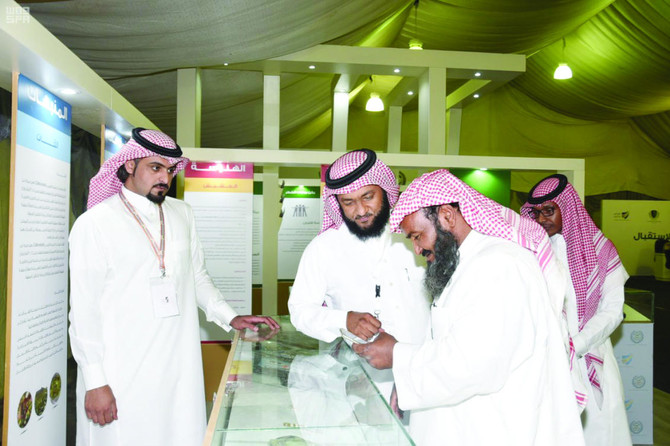
Ancient castles in Sabya governorate reflect architectural heritage
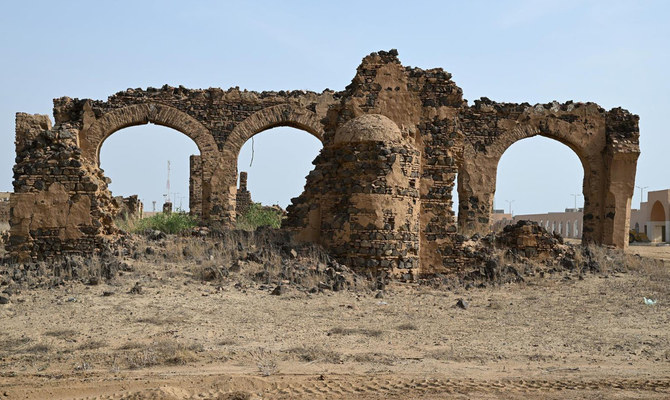
- The Sabya Archaeological Castle has origins that date to the early 20th century
RIYADH: The Sabya governorate in the Jazan region is a treasure trove of archaeological wonders, each with its own unique story.
Among these is the Sabya Archaeological Castle, whose origins date to the early 20th century. The castle, steeped in history, is a must-visit for any archeology enthusiast or researcher.
The castle is situated near Sabya Avenue, within King Fahd Park. It is part of the present city of Sabya, which offers a view of Wadi Sabya.
The Sabya Archaeological Castle, an architectural marvel, boasts spacious rooms with high ceilings and thick walls. The walls, adorned with beautiful geometric and floral patterns, are a testament to the skill of the craftsmen who built them.
Local materials such as volcanic stone, wood, and limestone were used during construction. Some accounts suggest that the clay used in making bricks was sourced from the banks of Wadi Sabya.
The use of volcanic stones of various sizes and shapes in particular gives the castle a unique and captivating beauty. The stones were obtained from volcanoes near the city, including Jabal Akwa, located a short distance northeast of Sabya.
The mosque, situated north of the castle, was also constructed using the same building materials as the castle and other structures in the area. It was intended for prayers and gatherings of religious leaders, dignitaries, and the people of Sabya. Its mihrab, or prayer niche, still stands despite some damage.
Some accounts suggest the presence of remains of other buildings in the vicinity of the castle, opening the possibility of conducting archaeological excavations to reveal more secrets about this site.
The Kingdom’s Heritage Commission is diligently working to preserve the Sabya Archaeological Castle, recognizing its significance as one of the most important archaeological sites in the Jazan region.
Artist captures Saudi charm with digital works
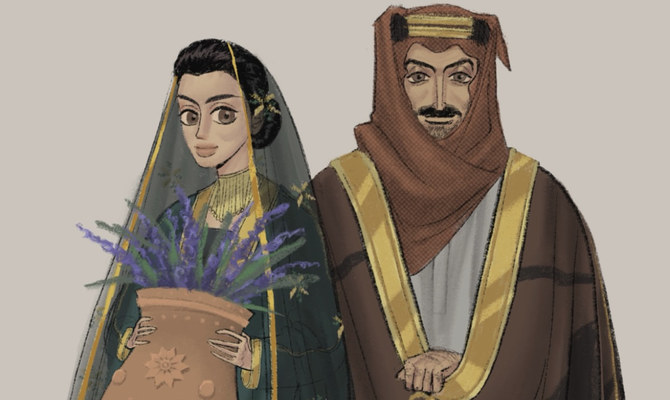
- Ghada Al-Shammari says art can be a means to showcase nation’s rich heritage
RIYADH: Timeless Arabic songs and heartfelt poetry provide the inspiration for Ghada Al-Shammari’s digital art, which showcases the Kingdom’s culture and society.
Al-Shammari's first artwork in 2017 was inspired by a popular Saudi song by Majed Al-Esa called “Hwages,” which means “concerns” in English.
The music video provided a comment on society by using satire, showcasing women driving cars, skateboarding, and playing basketball — activities that at the time were not easily accessible for women.
“I liked how they portrayed women in the traditional Saudi abaya, which motivated me to draw it,” Al-Shammari told Arab News.
For one of her artworks Al-Shammari was inspired by a poem by literary icon Prince Badr bin Abdul Mohsen and popularly performed by the late Saudi singer Talal Maddah.
The drawing depicts a man glancing at a woman who has her eyes downcast, with an oud instrument between them, and the 1980 song title “Forgive Me” written in Arabic text above the illustration.
The Saudi artist said that she tries to capture the poet’s feelings with her artwork, adding: “Romantic songs with descriptions of the poet’s beloved have been particularly inspiring for me.”
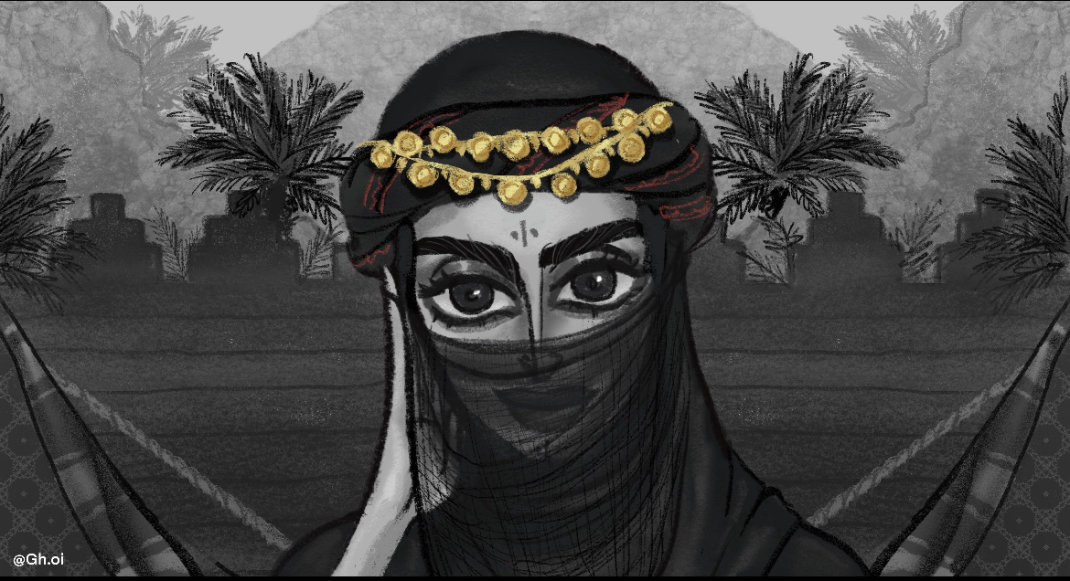
Al-Shammari draws inspiration from the beauty within the Kingdom’s culture. Many of her artworks depict women wearing traditional Najdi-style dresses and gowns with draping silhouettes and glimmering gold headpieces and turbans.
The men are depicted with striking features and wearing traditional garments like the head coverings called ghutra or shemagh, and bisht, the men’s cloak commonly worn in Saudi Arabia and other Gulf countries.
“Saudi culture and traditions have significantly impacted my work. Growing up, I used to think of Saudi Arabia as just what was around me in terms of environment, customs, and traditions,” Al-Shammari said.
When she moved from her hometown of Hafar Al-Batin to the capital Riyadh, Al-Shammari said her friendships and acquaintances showed her a new world of ideas that elevated her artistic vision.
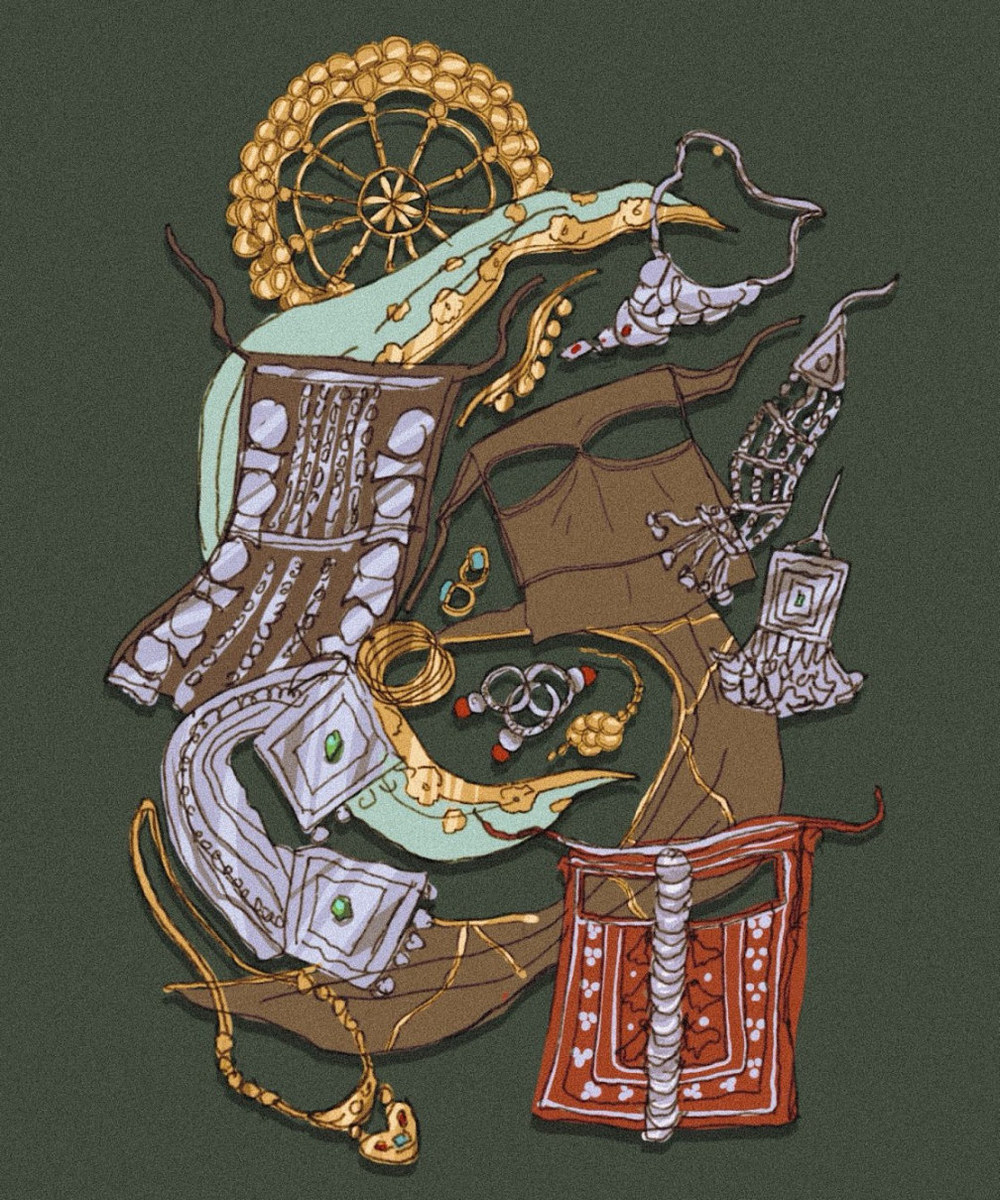
She added: “They shared stories about their region, important landmarks, and fascinating tales that were unique to their areas. This motivated me to learn more about my country and enjoy drawing the diversity and differences I discovered in my artworks.
“Saudi Arabia is full of exciting things, and its diversity is what fascinates me the most. Each region has its own heritage, traditions, architecture, and unique dialect, which makes me eager to learn more and create works that reflect this beautiful diversity.”
Al-Shammari said she selects particular color combinations to evoke the emotions she aims to convey, opting for brighter colors for her cheerful and vibrant works.
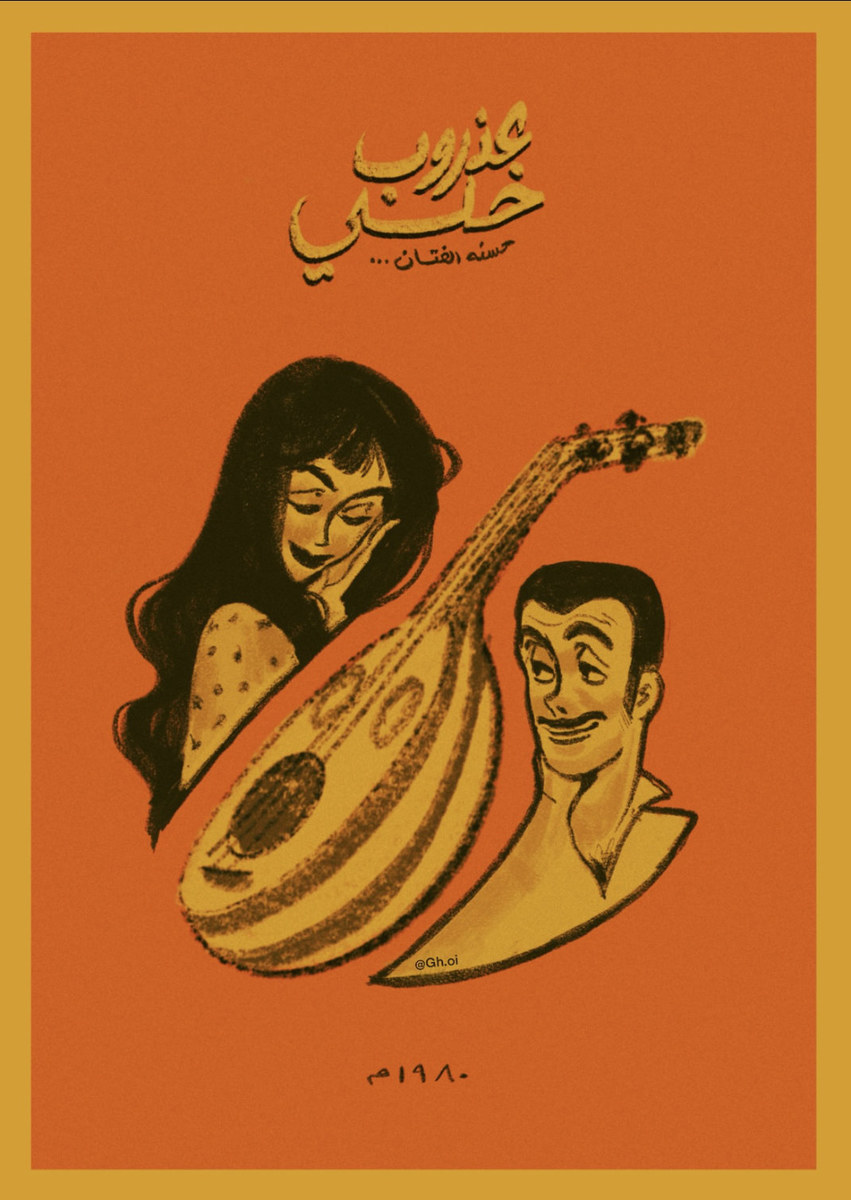
Al-Shammari graduated from the College of Arts and Design at Princess Nourah bint Abdulrahman University with a bachelor’s degree in fine arts.
She added: “Through this specialization, I discovered many artistic and historical aspects, learned about various artists, and got to understand their ideas and philosophies, which transformed my perspective of my work.”
Her love of art began as a child when she would draw characters from her favorite anime and cartoons.
“I started focusing on drawing from an educational perspective at the age of 12 through YouTube tutorials on drawing anime and cartoons, which sparked my artistic journey,” Al-Shammari said.
She added that art is important as it showcases the cultural aspect of a country and its heritage, conveying its history and traditions that help define life in the past and present.
She said: “It serves as a way to preserve and transmit this heritage from one generation to the next, seeking to document knowledge and memories.
“Additionally, from an economic standpoint, art is considered a means to attract tourists interested in discovering the country and its civilization.”
For more information on the artist, visit her Instagram @gh.oi.
KSrelief chief and WHO’s Tedros meet in Geneva, sign agreements worth $20m
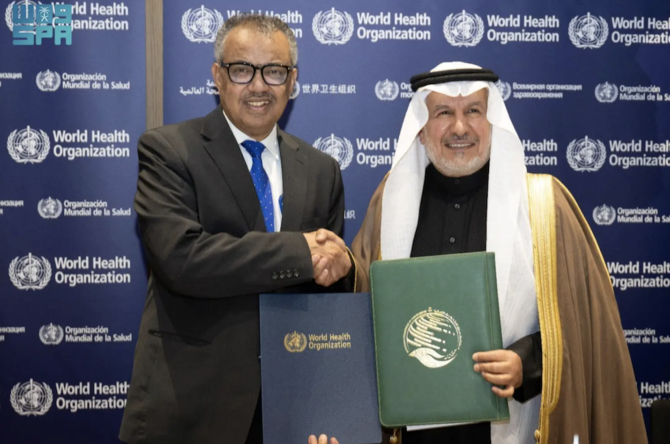
- Al-Rabeeah also signed five executive programs with WHO for Yemen, Sudan, and Syria, with a total value of $19,496,000.
GENEVA: The chief of the King Salman Humanitarian Aid and Relief Center (KSrelief) Dr. Abdullah bin Abdulaziz Al-Rabeeah met with Director General of the World Health Organization (WHO) Dr. Tedros Adhanom Ghebreyesus on Saturday in Geneva.
The meeting was held on the sidelines of the 77th World Health Assembly currently being held in the Swiss city.
Saudi Arabia’s permanent representative to the UN in Geneva Abdulmohsen bin Khothaila also attended the meeting.
During the meeting, the two sides discussed issues of common interest related to joint relief and humanitarian projects in the health sector, as well as the mechanisms for delivering medical assistance to patients and the injured worldwide.
Tedros praised the medical projects and programs carried out by the Kingdom, through KSrelief, to improve the health situation of those in need in various countries.
Also on Saturday, Al-Rabeeah signed five executive programs with WHO for Yemen, Sudan, and Syria, with a total value of $19,496,000.
The first agreement aims to address the severe shortage of kidney dialysis supplies in Sudan to reduce mortality among kidney failure patients across various Sudanese states by providing dialysis supplies sufficient for some 235,000 dialysis sessions, securing 100 dialysis machines, and paying the salaries of medical staff in 77 dialysis centers, with a value of $5 million.
The second agreement entails providing medical assistance to earthquake victims in Syria, with a total cost of $4,746,000.
The third agreement focuses on combating the spread of measles among children under five in Yemen, with a total cost of $3 million.
The fourth agreement aims to improve water and sanitation services in healthcare facilities, ensuring sustainable water supplies to serve the neediest populations in Yemen, valued at $3,750,000. The agreement includes drilling solar-powered wells in 10 healthcare facilities.
The fifth agreement aims to reduce the spread of cholera across Yemen, with a value of $3 million.
First group of Moroccan pilgrims arrive in Saudi Arabia through Makkah Route Initiative
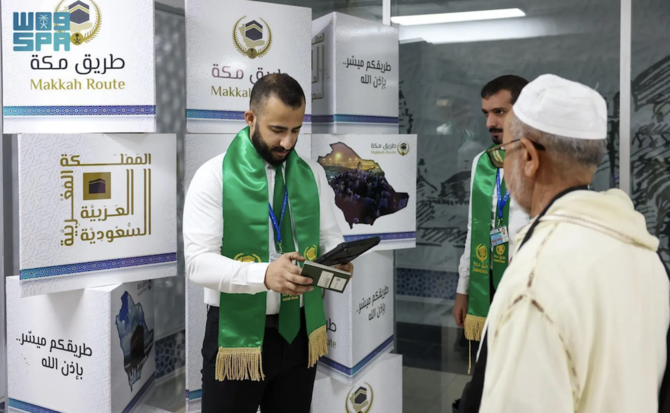
- The Saudi leadership has prioritized caring for the pilgrims and creating an atmosphere of faith during their Hajj journey
RIYADH: The first group of Hajj pilgrims from Morocco arrived at the Prince Mohammed bin Abdulaziz International Airport in Madinah on Saturday, having departed from Mohammed V International Airport in Casablanca.
The pilgrims have traveled to the Kingdom through the Makkah Route Initiative.
The initiative aims to make the journey for pilgrims to complete Hajj as easy as possible, through electronic registration in their country of origin, including those related to immigration, health, luggage, travel, and housing in Makkah and Madinah.
They are transported by buses on designated routes, with service agencies delivering their luggage to their places of stay, Saudi Press Agency reported.
The MRI is part of the Ministry of Interior’s Pilgrim Experience Program (PEP), a pillar of the Kingdom’s Vision 2030.
Now in its sixth year, the initiative is carried out in cooperation with a host public and semi-government authorities, including the ministries of foreign affairs, health, Hajj and Umrah, media, civil aviation, the Zakat, Tax and Customs authority, SDAIA and PEP.
The Saudi leadership has prioritized caring for the pilgrims and creating an atmosphere of faith during their Hajj journey.
Pilgrims who have been arriving in recent days have expressed their “gratitude to the Kingdom’s government for the services and facilities that have been provided, making their pilgrimage safe and reassuring,” Saudi Press Agency said.
King Salman, Crown Prince congratulate King Abdullah II on Jordan’s national day
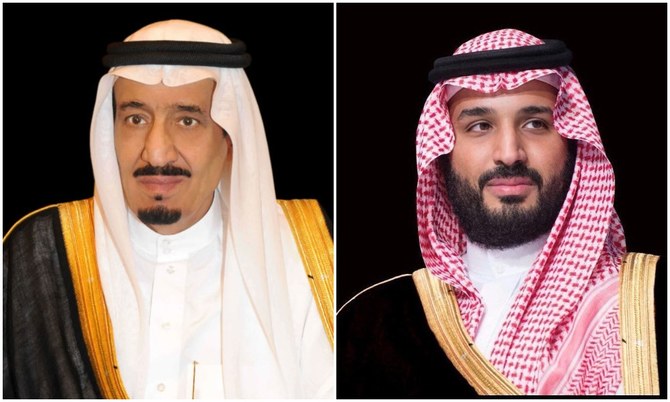
RIYADH: King Salman sent a cable of congratulations to King Abdullah II of Jordan on the occasion of his country's independence day on Saturday, Saudi Press Agency reported.
King Salman wished King Abdullah continued good health and happiness, and the government and people of Jordan further progress and prosperity.
Crown Prince Mohammed bin Salman also sent a similar cable to the Jordanian king.
The messages from the Saudi leadership were among dozens sent by global leaders and heads of international organizations, including the speaker of the Arab Parliament.
Adel bin Abdulrahman Al-Asoumi wished Jordan and its people “more security, stability, and prosperity.”
He also praised the “civilizational achievements made by the kingdom under the leadership of King Abdullah II in all areas that have made the kingdom a leading regional and international model.”


